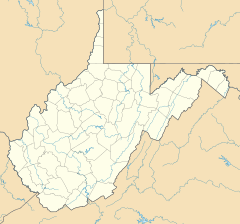Lauckport, West Virginia facts for kids
Quick facts for kids
Lauckport
|
|
|---|---|
| Country | United States |
| State | West Virginia |
| County | Wood |
| Elevation | 633 ft (193 m) |
| Time zone | UTC-5 (Eastern (EST)) |
| • Summer (DST) | UTC-4 (EDT) |
| GNIS ID | 1560595 |
Lauckport is a small, quiet community located in Wood County, West Virginia, in the United States. It's not a city or a town with its own local government. Instead, it's known as an "unincorporated community." This means it's a group of homes and businesses that are part of the larger county, rather than having their own separate town hall or mayor.
Contents
What is an Unincorporated Community?
An unincorporated community is a place where people live that doesn't have its own official local government. Instead, it's managed by the larger county it's located within. This means services like roads, police, and fire departments are usually provided by the county government.
How is Lauckport Governed?
Since Lauckport is an unincorporated community, it doesn't have a mayor or a town council. The people living there follow the rules and laws set by Wood County. This is different from a city or town, which would have its own specific local government.
Where is Lauckport Located?
Lauckport is found in the western part of West Virginia. It sits within Wood County, which is known for its beautiful landscapes and connection to the Ohio River. The community is located at an elevation of about 633 feet (193 meters) above sea level.
Time Zone Information
Like many places in the eastern United States, Lauckport observes the Eastern Time Zone. This means during standard time, it's five hours behind UTC (UTC-5). During Daylight Saving Time, it shifts to Eastern Daylight Time (EDT), which is four hours behind UTC (UTC-4).
How Did Lauckport Get Its Name?
The name "Lauckport" most likely comes from a local family. The Lauck family was important in the area's early history. Many communities in the United States were named after founding families or important local figures. This helps us remember the people who first settled and developed the area.



